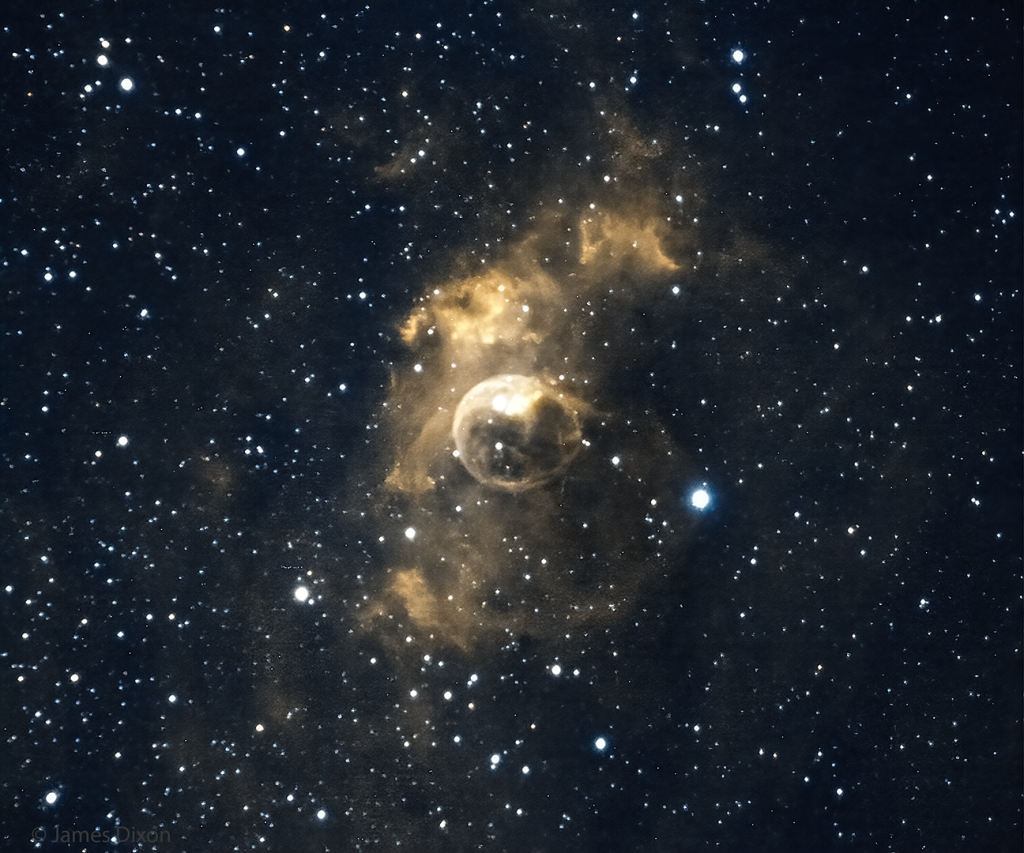Last night at the River Ridge Observatory I tried for several objects with my 11″ SCT at f/6.3 but my results were mixed. The first object, the face on galaxy M51 was just too low. The second, the globular cluster M13 wasn’t but the results were just “meh”. The third object, the Bubble Nebula in Cassiopeia, turned out acceptable though not spectacular. I set this up for a 90 minute run with plans for another and took a nap but found that the winds picked up after midnight and that gave my scope “the jitters” and I wound up tossing a third of my 90 minute session. My last target, the Helix Nebula, suffered the same gusty wind problem except it was 100% of the images were ruined. So I got home at 4AM with one image that I will probably do over.

The Bubble Nebula (NGC 7635) is part of a larger emission nebula that you can see here. The bubble was created by a hot type O star inside it whose stellar winds are pushing it outward. The UV radiation from that same star is exciting the gas at the edges of the bubble, and perhaps more of the larger cloud, causing it to glow. You see that brightest star below and to the left of center in the bubble? That’s not it. It is the smaller star above and to the left of that star that is the star creating the bubble.


